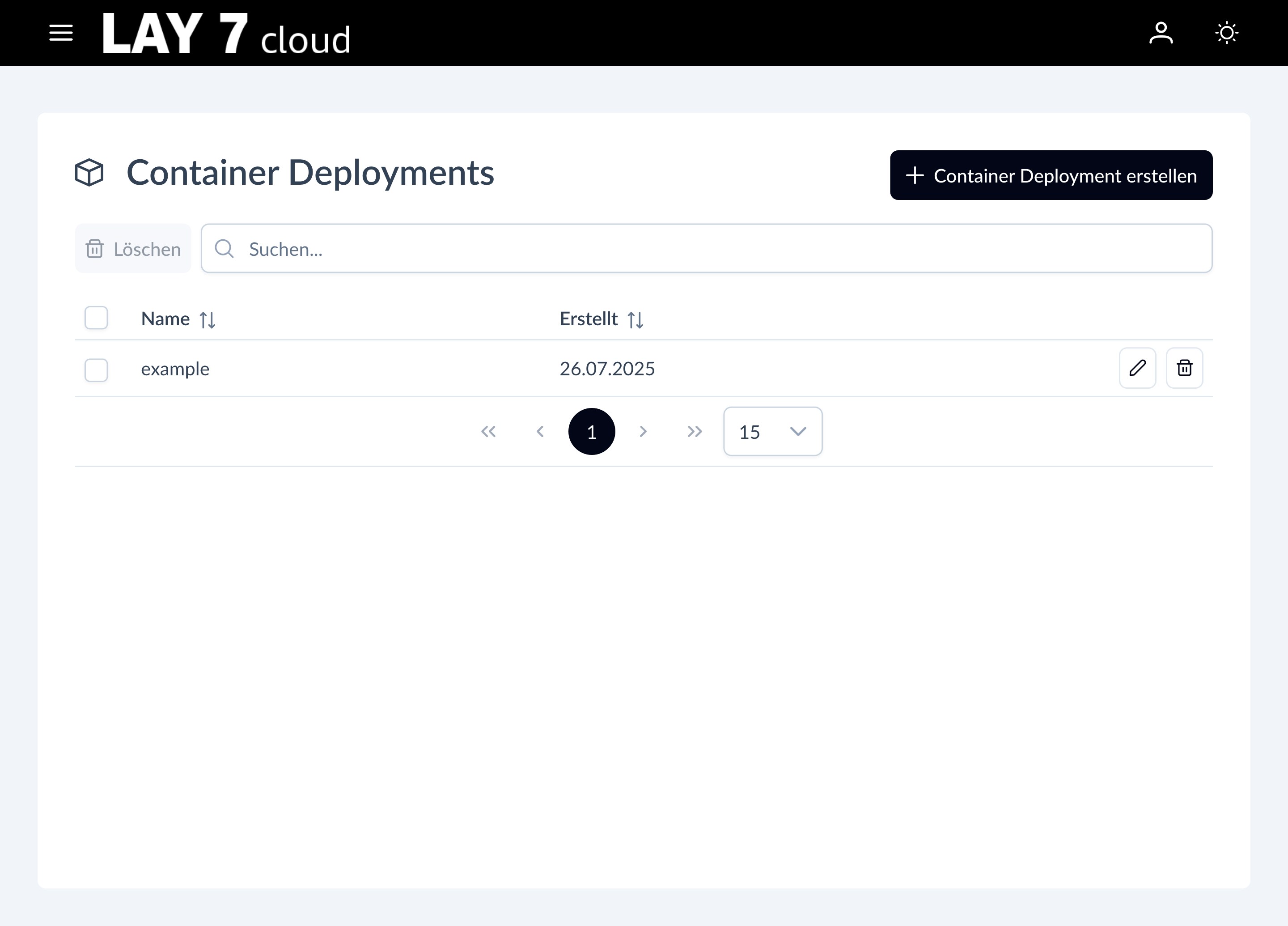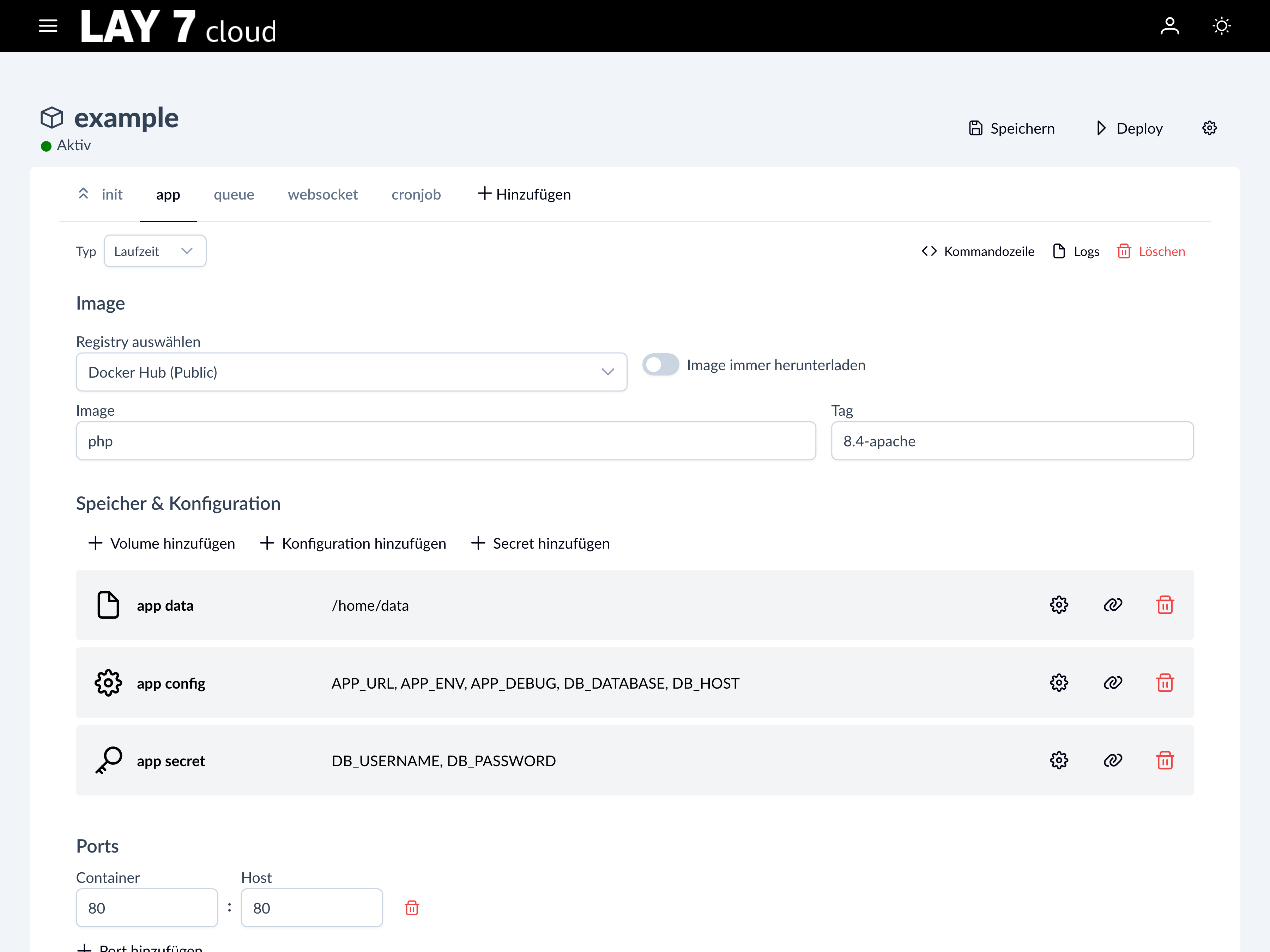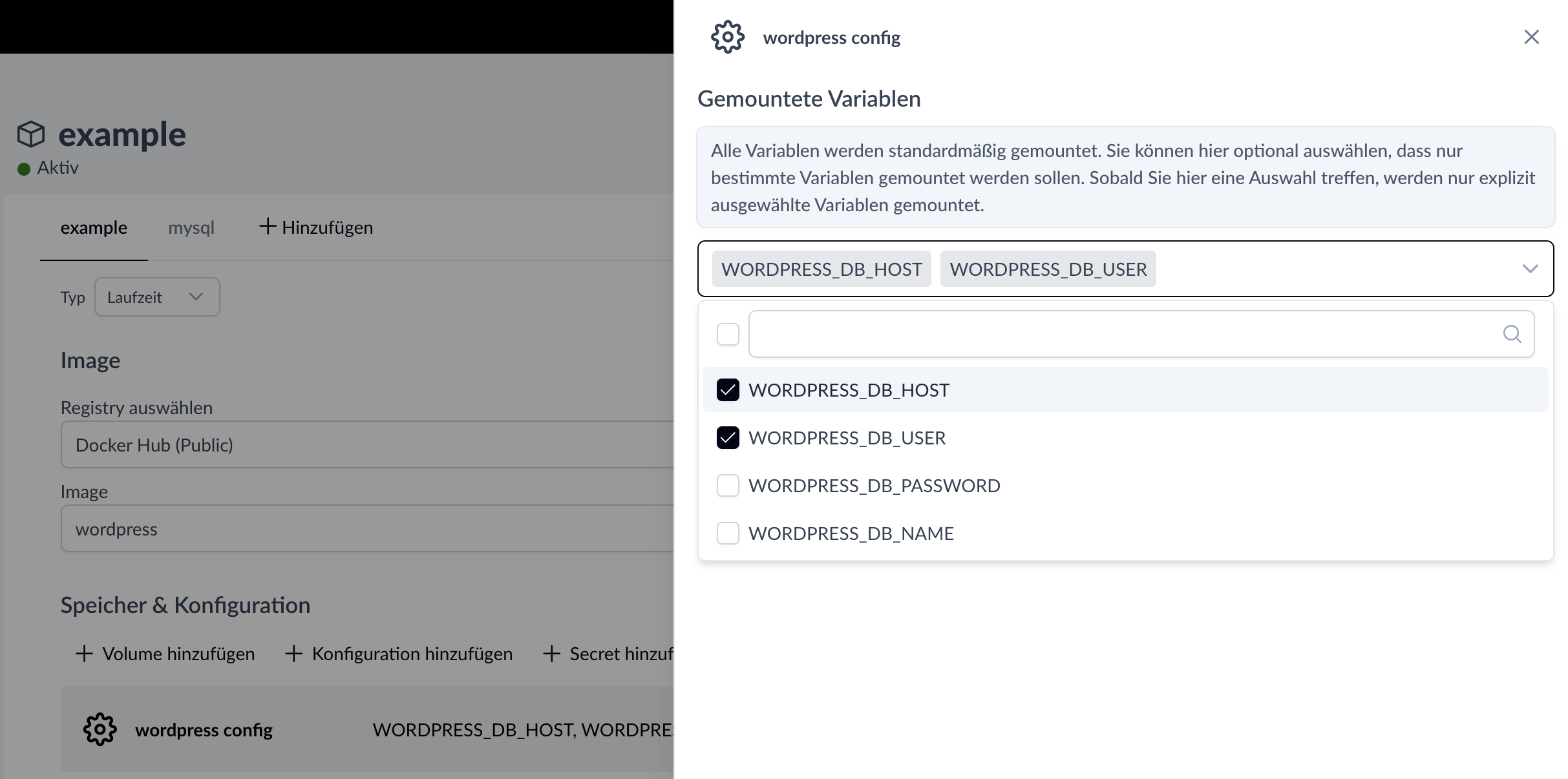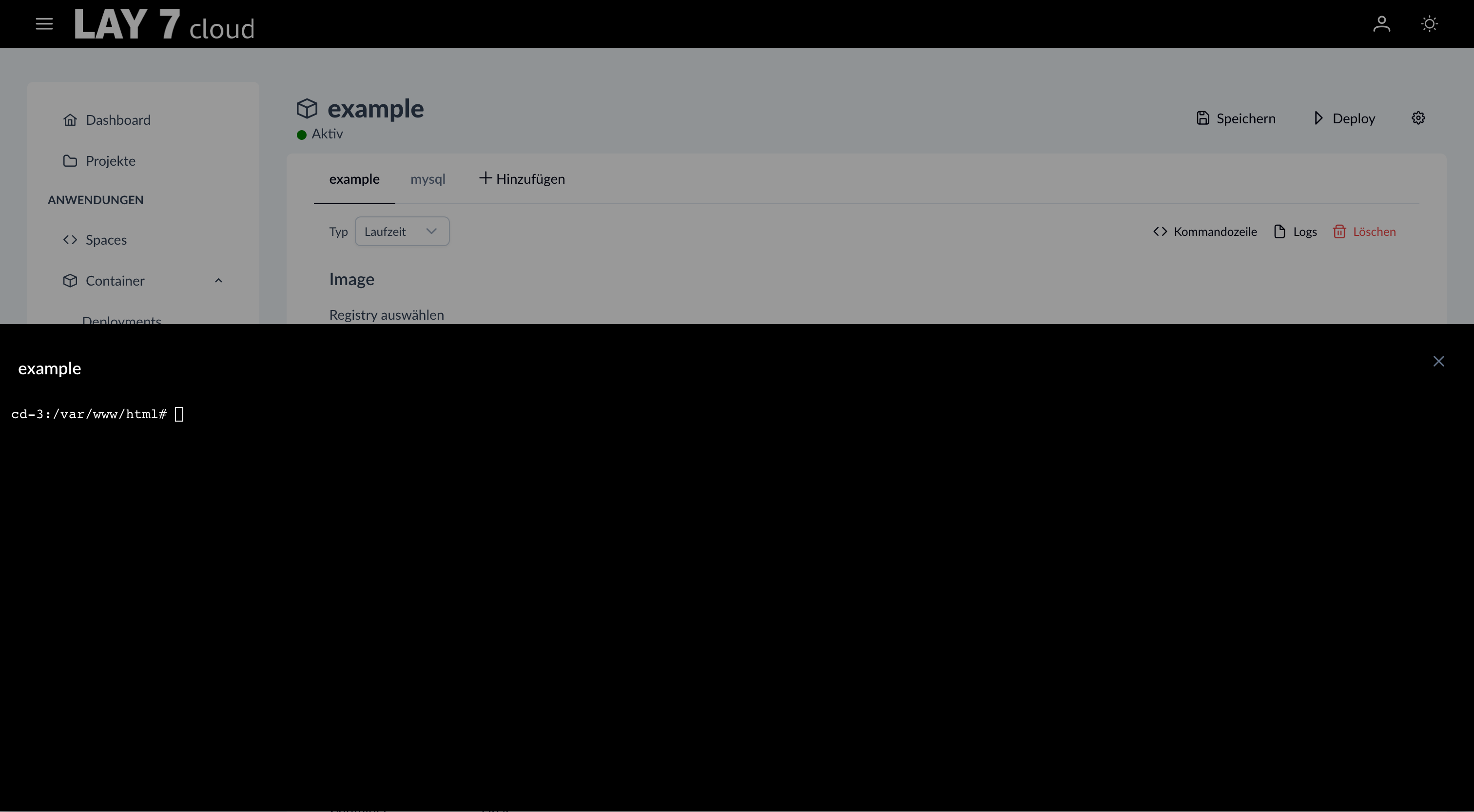Containers
Deploy flexible web applications with just a few clicks
Containers in the LAY7 cloud provide a powerful yet straightforward way to run web applications securely and with high availability. Unlike traditional Kubernetes deployments, you don't need a complicated YAML manifest – instead, you use an intuitive user interface with clear structures and quick configuration.
Whether you manage complex infrastructures or simple microservices, containers in the LAY7 cloud adapt to your needs. Thanks to smart management, various integration options, and flexible scaling, you maintain control without having to deal with the underlying infrastructure.

Configure instead of code
User-friendliness is our top priority in the LAY7 cloud. While in other cloud environments you might write lengthy YAML files and manually define complex resources, everything in the LAY7 cloud can be done through the UI – quickly, clearly, and without errors.
Creating a container deployment takes just a few minutes. You choose the image, configure network settings, and define volumes, secrets, and environment variables – all without terminals or scripting. This makes the platform particularly suitable for development teams, agencies, and businesses that value fast time-to-market and easy maintenance.
All settings can be adjusted at any time as needed and deployed with a single click. This ensures your application is always up-to-date without needing to worry about the details of the infrastructure.

Three Container Types for Every Use Case
Container deployments in the LAY7 cloud consist of one or more containers that work together within a deployment. Each container has a specific task. By dividing into special types, you gain clearer structure and more flexibility in building your application.
The three supported container types – Boot, Runtime, and Job – allow for complex workflows to be represented without unnecessary complexity. Boot containers perform initializations, runtime containers host the application itself, and job containers can execute scheduled tasks such as backups, mailing tasks, or cleanup processes.
This way, both classic web applications and microservices, APIs, or automated workflows can be easily represented.
Boot
Run containers before starting your application – e.g. for migrating databases or setting permissions.
Runtime
The main containers of your application. These containers remain active and are managed directly through the deployment.
Job
These containers run periodically at a defined time. They are ideal for cron jobs, caching, or maintenance scripts.
Flexibly combinable
Combine any number of container types within a deployment. This allows for efficient representation of custom workflows.
Smart Resource Utilization
Each container has its own performance level that can be scaled freely. This allows you to precisely determine how much RAM and CPU your application has available – while keeping an eye on costs. Ideal for when requirements change over time or during peak loads.
One performance level in the LAY7 cloud corresponds to 128MB of RAM and 0.0625 vCPU. The fine scaling level allows both resource-saving background jobs and demanding applications to be optimally configured.
Storage volumes can also be defined individually. The storage can be expanded at any time in 1 GB increments, so you only pay for the space you actually need. This ensures cost transparency and prevents over-provisioning.
Full Control with Configs, Secrets, and Volumes
The LAY7 cloud allows you to centrally manage various resources like configuration files, environment variables, or sensitive information – for example, API keys – within the deployment.
Once created, secrets and volumes can be mounted in any container of the deployment – whether boot, runtime, or job containers. This reduces redundancies and ensures a clearly understandable structure.
Your advantage: Configuration management becomes easier, safer, and more organized, especially as project complexity increases.

More Comfort in Daily Work
Speed and precision are essential in everyday work. That's why the LAY7 cloud provides a variety of practical tools that make your work with containers easier.
With the integrated web console, you get direct shell access to each container – live in the browser, no SSH needed. Error analysis, logs, and configurations can be immediately tracked or adjusted.
Integrating your own container images is also incredibly easy. Set up your private registry once, and use the images across projects anytime.
Web Console
Direct access to shell and logs in the browser – ideal for debugging, spontaneous adjustments, and monitoring.
Private Registries
Use your own container images from private repositories. Once connected, they are available globally.
Central Overview
The dashboard shows all deployments, containers, resources, and performance metrics at a glance.
Live Logs
Follow the logs of your containers live in the UI – for quick troubleshooting without terminal.
Live Access with the Web Console
The integrated web console allows you direct access to the command line of your containers – without VPN or SSH access.
Ideal for quick analyses, debugging, or administrative tasks within the container. You can execute commands directly in the browser and receive immediate feedback.
The access is secure, browser-based, and one-click – without needing to install any additional tools.

Frequently Asked Questions about Containers in the LAY7 cloud
Container technology can simplify many things – but it also brings new questions for beginners. That's why we've gathered common questions and answered them in an understandable way.
If you need further assistance, our support team is always ready – of course, free of charge.
Ready for Productive Applications
Whether you need hosting for a static website, a complex backend, or an API – containers are ready for it in the LAY7 cloud. The entire infrastructure is designed for redundancy, stability, and performance.
With just a few clicks, you build production-ready deployments that can be expanded or adjusted at any time. An ideal model for startups, agencies, and growing companies – but also for corporate teams that need clear structures and manageable workflows.
Experience how easy cloud technology can be today – without vendor lock-in or complicated dependencies.
